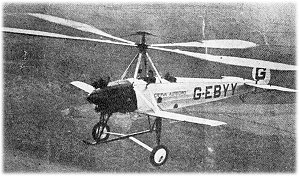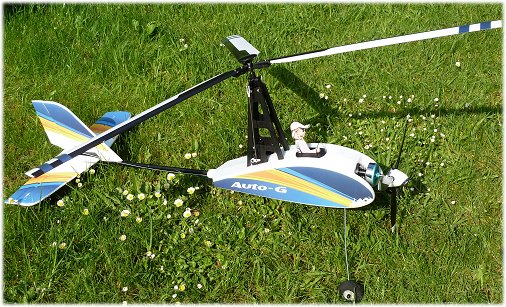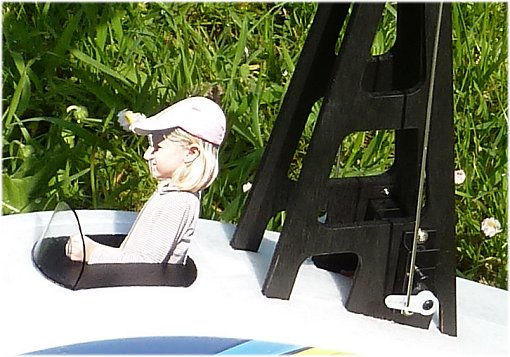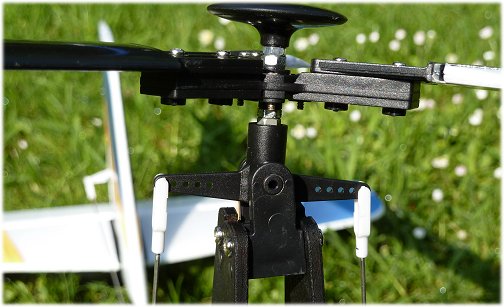The RC Autogyro
Radio control aircraft come in a variety of forms, and an rc autogyro is a type of aircraft that, you could say, is kind of a plane-helicopter hybrid!
Autogyros, sometimes also called gyrocopters, use an engine and propeller to give the forward thrust, just as an airplane does, but the lift comes from a set of freewheeling main rotor blades. The rotors are similar to those found on a helicopter, but they are driven only by the wind flowing through them - they are not powered.
The first full size autogyro was developed and flown by Spanish engineer Juan de la Cierva, with the maiden flight taking place in 1923. The Cierva autogyro is now a classic design, and autogyro ownership has become a popular sector of private aviation since those early days.
 Shown right (©Pub.Dom.) is a C-8 autogyro being flown by Cierva in 1928. Sadly Cierva was killed during a take-off crash of a commercial airliner flight in 1936, but his contribution to aviation history is undeniable.
Shown right (©Pub.Dom.) is a C-8 autogyro being flown by Cierva in 1928. Sadly Cierva was killed during a take-off crash of a commercial airliner flight in 1936, but his contribution to aviation history is undeniable.
RC autogyros are, generally speaking, uncommon. There have been very few kits produced and so most radio controlled 'gyros have been scratch built, with the exception of a small number of ARFs.
Bucking that trend back in 2012, Durafly launched the first plug-and-play foam electric rc autogyro, the Auto-G.

The Auto-G (pictured above) is a simple design - foam fuselage and tail feathers with a carbon tube tail boom. The rotor mast is plywood and the main blades are laminated foam.
Power comes from a brushless motor turning a three bladed prop. A 3S 1300mAh Li-Po pack is recommended and the ESC is 20A.
As you can see in the photo below, I personalised my Auto-G by making a little profile pilot of my daughter sitting behind a small windshield. I also painted the rotor mast black, which improves the look of the autogyro by 100%!

RC Autogyro Take-Off & Control
Control of an rc autogyro comes from four channels; motor power, left/right aileron, elevator and rudder.
Strictly speaking, the use of the word aileron is incorrect because there are of course no ailerons. The left/right roll is achieved by tilting the main rotors to one side or the other, this being done by two servos at the base of the rotor mast operating a tilting rotor base assembly. It's all very straightforward stuff and there is very little to go wrong, compared to a complicated rotor head of a collective pitch rc helicopter.

Above: the rotor assembly base is simple but effective.
The rotor mast of an rc autogyro is angled back at quite an angle. This is to ensure a good airflow through the blades so that the blades can quickly get up to speed as the autogyro takes off.
On that note, take off is the most hair-raising part of the flight. The rotors need to be spinning before the start of the take off run, and this is easily achieved by spinning them with your hand. Or, if there is a breeze blowing, just point the autogyro in to wind (as it should be for a take off, anyway) and let the wind get the blades spinning (perhaps with a little help from your hand too!).
The subsequent Mk.II Auto-G's and the Super-G autogyros are actually fitted with small electric start-up systems which power up the main rotor blades before the take off roll. This works well, and I've retro-fitted the system to my Mark I Auto-G.
Once the blades are spinning, increase motor power to start your take off run and let the autogyro accelerate along the ground. The main rotor blades will quickly get up to speed, and your autogyro will lift!
The Durafly Auto-G does have a tendency to tip to the left as it leaves the ground; I don't know whether this is a common trait of all rc autogyros, or whether it's caused by torque roll*. Being prepared with some right aileron does ease the situation, but it's still a hairy moment!
*Although torque roll might be a contributing factor, my good friend John of rchelicopterfun.com explained that a likely cause is lift dissymmetry, whereby the advancing rotor blades (on the right hand side of the rotor disc) generate more lift than the retreating blades, until they get up to speed, thus rolling the Auto-G to the left. This makes perfect sense to me.
Up, Up and Away!
Flying a radio controlled autogyro is certainly a completely different experience, in a good way!
I've flown planes and CP helicopters, and my Auto-G is not like any of them - the maiden flight was certainly interesting to say the least!
Its desire to climb (there's a lot of lift being generated, for not much weight) resulted in me having to apply down elevator trim almost to the limit. This was rectified back on the ground, by adjusting the elevator linkage accordingly.
Once that was sorted, the Auto-G became a joy to fly; loops and stall turns are easily performed, and slow speed handling is as good as it gets.
Landing is a breeze - with practice you can cut the power and let it float down to a spot landing, just carefully balancing elevator and roll to keep the approach path constant.
Below is the official promo video for the Durafly Auto-G...
Is an RC Autogyro for Beginners?
If you've never flown a radio control aircraft of any kind before, my answer would be a definite no.
Although they are relatively simple machines, they are not particularly forgiving in the air. If you have no prior experience, my recommendation would be to get confident with flying a rc plane or helicopter first, or both, and then you'll be fine with an autogyro.
Once you have got confident enough to fly an autogyro, you'll have a lot of fun with one!
The Durafly Auto-G has given me my first taste of flying an rc autogyro, and it's quickly become my favourite radio control aircraft of my collection - for the time being, at least!
I had no idea what to expect, and Hobbyking's claims of "it's a completely different rc flying experience!" just sounded like more marketing hype to me. Oh how wrong I was, and how right they were.
Flying a radio control autogyro like the Auto-G is a completely different experience, and I can give it a big thumbs up.
Page update: since writing this page sadly the Auto-G and its successors have long been out of production. I can't even seem to get hold of any replacement blades any more.
Hopefully more rc autogyros will become commercially available again soon - they truly deserve a place in the rc marketplace.
